On The MATCH List? Read This First
August 24, 2025
Why Customer Service Matters: The MATCH List
December 15, 2025Three Steps to Take When You’re On The MATCH List
If you’ve discovered that you’re on the Mastercard MATCH List, you likely have a ton of questions. What does it mean? What will happen to my business? What do I do now? It is normal to have a ton of unanswered questions—in fact, many people on the MATCH List do not know why or how they got on it. If you’re not sure what to do next, this blog is for you. Keep reading to learn more about the MATCH List and the steps to take once you find out you’re on it, including how to get early removal from the MATCH List.
Step 1: Understand What the MATCH List Is
The MATCH List isn’t just an industry black list. It can ruin your business. Knowing exactly what the MATCH List is, as well as its consequences, is the first thing to do. It will help you understand the urgency of the situation you are in.
The MATCH list is a record of merchants considered to carry an unacceptable level of risk. Banks and payment processors use this list to identify merchants that expose them to high-risk transactions and business practices. If you find yourself on the MATCH list, you will struggle to open a new Merchant Account with any processor while you’re on the list. Mastercard’s acquirers are required to consult the list before onboarding any new merchant, and in most cases, will reject any merchant on it.
Prior to MATCH, merchants may have found themselves on the Terminated Merchant File (TMF). MATCH is the replacement for TMF. It was originally created by Mastercard to help acquiring banks identify high-risk merchants before onboarding them. There is no formal notification process for Merchants placed on the MATCH list. Most find out when their current Merchant Services Provider terminates the relationship, and the Merchant attempts to open a new Merchant Account and is rejected.
How You Got on the MATCH List
You got on the MATCH List because you allegedly violated one of their reason codes. Many people who violate these codes have no idea that they have at all, or it has been violated through no fault of their own.
The MATCH List reason codes include:
01 – Account Data Compromise
02 – Common Point of Purchase
03 – Laundering
04 – Excessive Chargebacks
05 – Excessive Fraud
06 – Reserved
07 – Fraud Conviction
08 – Mastercard Audit Program
09 – Bankruptcy or Insolvency
10 – Violation of Standards
11 – Collusion
12 – PCI Noncompliance
13 – Illegal Transactions
14 – Identity Theft
The two most common reasons for being placed on the MATCH List include excessive chargebacks and PCI Noncompliance. Double-check to make sure that you are totally compliant with PCI standards and that your chargeback rate is within the threshold.
What Happens if You Stay On
If you stay on the MATCH List, you won’t be able to have a merchant account anymore. As such, it will be very difficult to process payments. Most people pay with their credit cards or debit cards, which will eliminate a large pool of customers who will work with you.
In addition, all of your information will be stored on the MATCH List, eliminating any workarounds or loopholes you could try. This includes changing the name of your business or opening a new one.
The information stored on the MATCH List includes:
- Business name in all forms, including all legal names and DBAs
- Business address
- Phone numbers
- Tax ID number
- Owner names
- Owner addresses
- Owner phone numbers
- Associate names
- Associate addresses
- Associate phone numbers
- Reason for termination
- Merchant account information
- Business URLs
In some cases, you could decide to become a High-Risk Merchant and go with a processor that works with them. You’re not guaranteed to land a merchant account contract with them, however. They are used to working with inherently high-risk businesses, such as subscription services or smoke shops. High-risk processors charge very high fees and you will be forced to sign a very lengthy contract.
Step 2: Get Everything Ready
The second thing you should do once you’ve found out that you are on the MATCH List is to get all of your documentation together. If you are certain that you have been placed on the MATCH List due to an error, it is extremely important that you have the information and records to back up your stance. Fixing whatever you can fix and giving your bank a call are a couple of actions you can take that might help, although they are not guaranteed at all.
Address the Issue
If you have found that your chargeback rate is above the threshold, you’ve violated a PCI security standard or other Mastercard standard, and it is important to rectify the issue as soon as possible. Keep your records of proof that the issue has been resolved, as it will be helpful later.
Call Your Bank
Here is a sad reality of the MATCH List: Your bank is under no obligation to help you at all. So much so that they are not even obligated to alert you to the fact that you’ve been placed on the MATCH List at all. Many people find out in different ways, such as their accounts being shut down or their applications being denied. They are also not obligated to let you know the reason you are on the list or offer any avenue to help you off of it.
It could be worth a shot, especially if you have plenty of documentation to back yourself up, to give your bank a call and see what you can work out. Merchant law is very complex, however, and it could do more damage than good if you try to resolve it on your own.
Step 3: Consider Early Removal
The penalty for the MATCH List is that you must remain on it for five years. Once five years are done, you will be erased and aged off of it, allowing you to go back to business as usual.
This is unrealistic for most people.
Luckily, you don’t need to wait five years and put your business and livelihood in jeopardy.
TFM Law has fought for numerous clients seeking removal from the list. Our success rate is phenomenal, and in most cases, we are able to get clients removed without the need for litigation. Your reputation is your business’s greatest asset. Don’t let it become your biggest liability, as it will be for each day that you remain on the list.
Early Removal with TFM Law
If you have found yourself on the Match List, you have options available to you. Don’t wait for the five-year period; get back to business ASAP.
The Law Offices of Theodore Monroe focuses on litigation and counseling in the areas of payments, credit card processing, e-commerce, direct response marketing, and Federal Trade Commission enforcement.
Last year, the firm removed 100% of the people who came to us from the MATCH list.
Theodore F. Monroe, Founder of TFM Law, has successfully:
- Represented merchants recovering funds from processors
- Structured processing relationships to comply with Card Brand requirements
- Drafted and negotiated contracts involving payment facilitators and ISOs
- Represented continuity merchants in compliance and litigation issues
- Fought for numerous companies in suits brought by the Federal Trade Commission and obtained excellent results for firms in the digital products, loan modification, government grant, and nutraceuticals industries
Before opening his firm, Mr. Monroe practiced law with Crosby, Heafey, Roach & May (now Reed Smith LLP) and Lewis, D’Amato, Brisbois & Bisgaard (now Lewis, Brisbois, Bisgaard & Smith), where he defended numerous accounting and law firms in professional liability actions, and insurance carriers in bad faith actions.
Before becoming a lawyer, Mr. Monroe worked as a forensic accountant at Coopers & Lybrand, which provided him with a unique background in forensic accounting and financial analysis among litigators in Los Angeles. Mr. Monroe studied at Duke University Law School, achieved a BS with Honors in Accounting from the University of Kentucky, and is a member of the California State Bar and the Kentucky State Bar.




